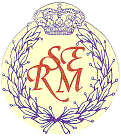


|
|
| Home |
| General Information |
|
|
| List of participants |
|
|
|
|
|
|
| The logo of the Meeting is a sample of what is known as a "potter stamp". These stamps–no longer than 10 centimeters– appeared on the handles, necks or rims of large ceramic or earthen vessels like pitchers and jars similar to the one seen in the foreground of the famous Diego Velázquez painting "El aguador de Sevilla" (The Water Seller of Seville) in the Wellington Museum, London. The method used was pressing a wooden, or more often, a ceramic mold against the still wet finished earthen piece. Sometimes these stamps also contained inscriptions and other motifs; however, in ceramic molds the combination was rare. These stamps were also used, although with different techniques, by precious metal workers, primarily gold– and silversmiths. | |
| Various theories
have floated around about the purpose of the stamps. Some think they were
simply the trademark of certain potters and/or ceramic workshops. Others
consider the stamps as unique to the city of Sevilla, a certificate to
authenticate that the products in the vessels were, indeed, produced in
Sevilla. This is supported by the fact that the main motifs were invariably
outstanding features of Seville and that the stamps appeared quite often on
vessels made for exporting wine and olive oil to Europe and the Americas.
Remember these were the years the Spanish Empire sent abroad supplies for a
huge number of soldiers and officials spread out all over the world. Of
course, the two possibilities are perfectly compatible. As mentioned above, the potter stamps depicted characteristic buildings and architectural elements of ancient Sevilla, especially the Giralda. There were so many motifs of it that some became sufficiently abstract to be compared to contemporary designs. In the Meeting logo the Giralda is represented quite faithfully and proportionally, the main body of the tower being easily recognizable: The Muslim construction, the lower part of the tower, appears with its pairs of windows elongated and stylized. The Renaissance part is depicted as thicker than reality by intertwined lines; whereas the Giraldillo statue is sketched in by dots and curves, although it is perfectly recognizable. As to the dates for use of the Meeting logo: Inclusion of the Giraldillo historically give a first approximation. Late 16th century since the bronze statue topped the tower for the first time in 1568. Archaeology demonstrates the use of the motif at least in the second quarter of the 17th century. |
|
